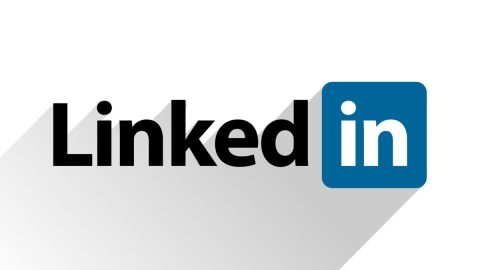An HR strategy lays out a compelling vision for empowering people to drive organizational success. It’s the compass guiding policies, goals, and priorities to help employees thrive and reach their potential. HR innovation plays a crucial role in this process, ensuring that the strategy remains cutting-edge and effective.
Crafting this roadmap takes deep reflection, wisdom, and a dose of HR innovation. It requires stepping back to gain perspective and looking ahead to chart new territory.
What Key Traits Set Thriving HR Strategies Apart?
-
They diagnose the current state of the workforce and workplace, incorporating HR innovation to reveal gaps and untapped opportunities through data, surveys, and conversations.
-
They allocate resources effectively to nourish professional growth and engagement at all levels.
-
They incorporate insights from HR leaders who know the rhythms of the organization best.
-
They inspire behaviors that embody company values and propel progress through HR innovation.
-
They create clarity for team managers and employees on expectations and development.
-
They stay nimble, evolving as needs arise while keeping people at the center, using HR innovation for employee retention to adapt quickly.
In essence, an HR strategy, infused with HR innovation, helps an organization’s greatest assets – its people – to excel and steer towards fulfilling common goals. It’s a living document that calls for imagination, analytics, compassion, and foresight.
Crafting An HR Strategy- 7 Key Ingredients:
An HR strategy brings a company’s vision to life by empowering its greatest asset – its people. These 7 steps help whip up an impactful HR roadmap:
-
Scan the Horizon, Get the lay of the land. What workforce and industry trends influence where your organization is headed?
-
Join the Expedition. Understanding the business strategy and what success looks like. Know the make-or-break priorities to align with.
-
Map the Route. Translate business aims into an HR blueprint to attract, motivate and retain talent. Define must-win battles.
-
Check the Wheels. Evaluate if your HR model can traverse the terrain ahead. Make necessary upgrades.
-
Pack Smart Assess all HR projects and invest wisely where value meets strategy. Don’t spread yourself thin.
-
Ready the Crew Identify skill gaps. Equip your HR team to reach destinations through training and hiring.
-
Track Progress Connect HR efforts to strategic and workforce metrics. Gauge milestones achieved versus planned.
With purposeful design, HR becomes an indispensable driver for organizational success. These steps create a strategy as visionary as the company’s future.
Transforming HR through Agile Workforce Solutions
Key Components Of An HR strategy:

Crafting A Powerful HR Strategy:
An organization’s ability to reach its goals hinges on its people. That’s why a dynamic HR strategy is invaluable. Though specifics differ across companies, the most effective HR plans include:
A Rallying Mission Statement:
Boil down the driving purpose behind your HR initiatives. Let it guide your team through all winds of change.
A Culture That Says “That’s So Us!”:
Tune into your company’s shared values and aspirations. Shape an environment where they shine through everyday behaviors.
Hunting for Dream Team Players:
Pinpoint and attract talent that aligns with where your organization aims to go. Welcome diverse strengths and skills.
Growing Our Superpowers:
Keep pace with emerging needs. Help your people gain abilities to meet them through coaching, training, and stretch assignments.
Dishing Out Appreciation:
Make compensation and benefits inviting and fair. Find ways big and small to convey that excellent work doesn’t go unnoticed.
With vision and understanding of your company’s soul, HR can nurture a workforce that constantly moves the needle on success!
HR Strategies Examples:
An organization’s aspirations live and breathe through its people. That’s why HR plays a vital role in paving the path to success. Let’s peek at how some top companies make the connection.
The University of Marquette crafts an HR mission statement that rings loud as a guiding bell. It reminds their team daily to enable the school’s strategy through “progressive human resource solutions.”
Seeking digital domination, Colgate conducted an upskilling study to ready its global workforce. Employees now wield bots, analytics, and e-savvy to eradicate delivery errors and escalate e-commerce sales.
Riding high growth, graphic design darling Canva thinks skills-first with talent. Their framework spotlights craft, communication, leadership and strategy abilities. Those not hired yet are invited into their 20,000-strong talent community through training and discounts.
In each case, HR stepped up as an invaluable partner in realizing organizational goals. They set their teams up for victory through vision, insight, and commitment. Now that’s a win-win strategy!
Final Take:
Crafting an impactful HR strategy takes thoughtfulness, insight, and a healthy dose of audacity. By thoroughly analyzing the talent landscape and business priorities, HR leaders can chart a course towards organizational success. They can allocate resources effectively, develop capabilities strategically, and track progress diligently.
However, even the best strategies rely on robust execution. This is where HR technologies become game-changing enablers. With powerful HRTech, people data and processes integrate seamlessly. Tactical tasks like recruiting, onboarding and performance reviews become streamlined and engaging employees strategies. Employees feel supported to excel while leaders gain visibility to make informed decisions.
So rather than getting stuck coordinating complex logistics, HR can finally focus on being pioneering strategists and talent champions. They can boldly lead the workforce towards the organization’s North Star. It’s time to explore how intuitive HRTech solutions can help put vision into action for people’s success. Let the future of work be guided by software that works for people, not the other way around.





